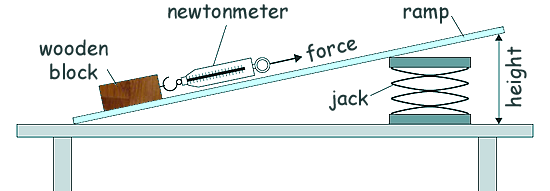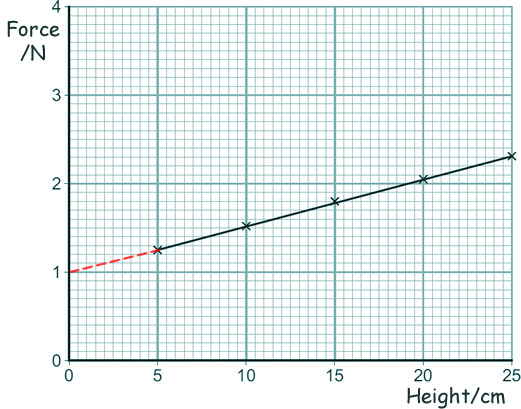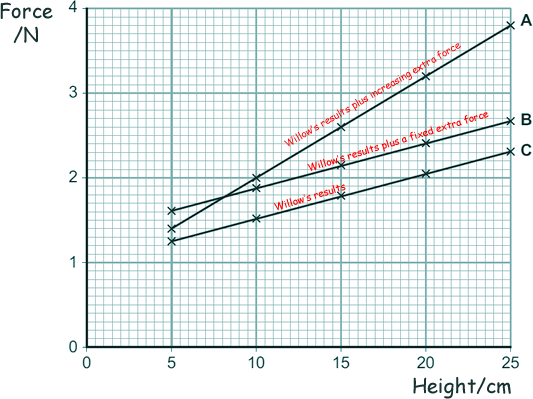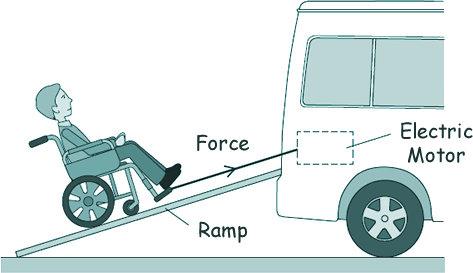GCSE Questions: Forces Q10. Willow investigated how the height of a ramp affected the force needed to pull a wooden block up the ramp at a steady speed. The diagram below shows the apparatus she used.
(a) To pull the wooden block up the ramp Willow must do work against two forces. The force of friction is one, name the other. The force of gravity [1 mark] (b)
[1 mark]
[1 mark] (c) The results from the investigation are plotted in the graph below:
[1 mark]
[1 mark]
[2 marks] (iv) Xander used the same apparatus to repeat the investigation. He increased the force of friction by fixing a rough material to the bottom of the wooden block.
Look at the graph above. Which of the result plots A, B or C is most likely to show Xander's results?
Choice B [1 mark] (d) The next diagram shows how a ramp is used to help move a child in a wheelchair into a car. The wheelchair is pulled up the ramp by a cable attached to an electric motor.
A force of 260 N is used to pull the child and wheelchair up the ramp. The ramp is 1.2 m long. Calculate the work done to pull the child and wheelchair up the ramp. Work done = force x distance moved in the direction of the force. W = Fd W = 260 x 1.2 W = 312 [3 marks] [11 Marks TOTAL] |
Follow me...
|









